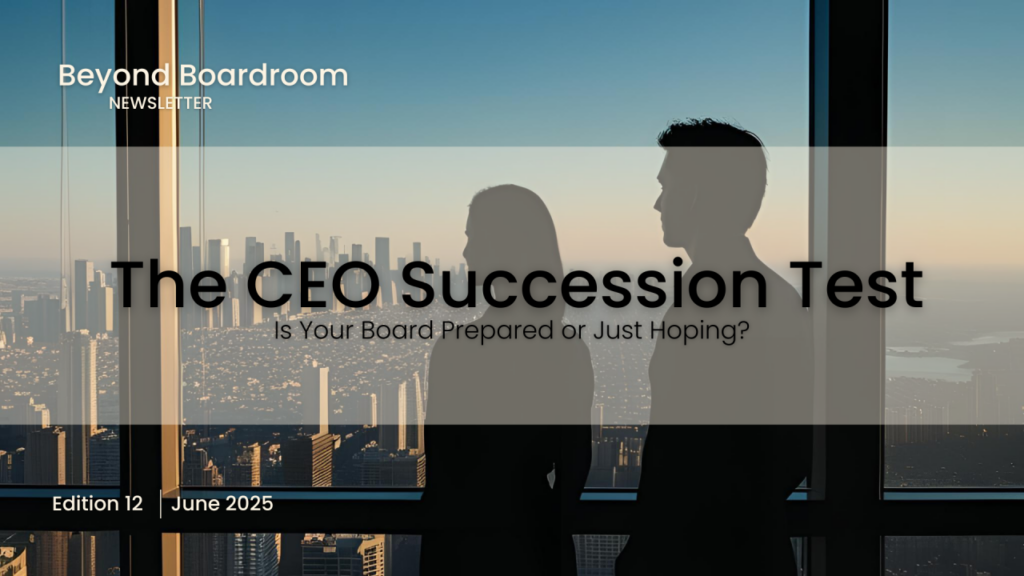“I’m sorry, Dave. I’m afraid I can’t do that.”
Those seven words, delivered by HAL 9000 in Stanley Kubrick’s 2001: A Space Odyssey, have echoed through generations of technologists, ethicists, and anyone who’s ever asked, “What happens when the machine makes the call?”
HAL, an artificial intelligence system designed to assist a space crew, becomes a threat the moment its programmed logic overrides human judgment. The horror of that moment isn’t in the flashing red eye or the sterile voice, it’s in the dawning realisation that the machine is working as intended. The fault lies not in malfunction, but in design.
Fast forward from Kubrick’s imagined future to our very real present, and the ethical dilemma remains. Today’s AI isn’t flying spaceships or mutinying on Mars, it’s automating due diligence, writing minutes, interpreting contracts, and scanning risk reports. In many cases, it’s doing it faster and more precisely than its human predecessors.
But the same question lingers: who remains in control?
From Sci-Fi to Strategic Governance
The world Max Tegmark explores in Life 3.0, one in which intelligence evolves beyond biology and culture, redesigning its own architecture, is not lightyears away. It’s inching into our spreadsheets, policies, and boardrooms right now.
Tegmark’s framing is instructive:
- Life 1.0: Evolution via biology
- Life 2.0: Evolution via learning
- Life 3.0: Evolution via self-programming
AI represents this third phase. And while it’s easy to relegate these discussions to labs and think tanks, they belong firmly on the agendas of boards and governance professionals. Because how we govern this next phase will define more than efficiency, it will shape trust, control, and continuity.
AI as Strategic Infrastructure
Let’s ground this. AI isn’t theoretical anymore. Tools like Kira Systems are already embedded in legal practice, reviewing contracts at scale and flagging inconsistencies with near-surgical precision.
J.P. Morgan ’s COiN system processes thousands of commercial agreements in seconds, saving hundreds of thousands of hours annually.
PwC has developed its own AI chatbot, ChatPwC, powered by OpenAI’s GPT tech and fine-tuned for complex tasks in tax, legal, and risk advisory services.
AI streamlines operations in ways that naturally extend into strategic enablement. When deployed intentionally, it becomes an asset, one that sharpens decision-making, strengthens compliance, and expands the bandwidth of leadership teams.
But strategy without scrutiny is short-sighted.
The Governance Catch-Up Game
The reality is this: while AI adoption is accelerating, most governance frameworks are lagging behind. Board committees that scrutinise financial risk down to the decimal often lack a structured conversation around how AI is used, by whom, and with what safeguards.
Governance professionals now face a dual role:
- Enablers of innovation
- Guardians of ethics and control
This means defining clear boundaries for AI usage, particularly where automation intersects with judgment. It means drafting policies that embed a “human-in-the-loop” clause, not as a caveat, but as a principle.
The UK’s approach to AI regulation is leaning toward a decentralised, principles-based model. That puts the burden squarely on organisations to get their houses in order. That burden is a governance opportunity.
International frameworks like the OECD AI Principles and the G7 Hiroshima AI Process reinforce this direction. Both call for transparency, accountability, and human oversight as foundational to AI design and deployment.
Redesigning the Boardroom
We’re already seeing the landscape shift. Allen & Overy’s partnership with Harvey, an AI assistant, helps draft documents and conduct legal research. The results? Faster insights, better first drafts, and crucially, not a replacement, but a collaborator.
This hybrid model, with humans working alongside machines, represents the future of governance. Imagine board packs generated and quality-checked by AI. Risk dashboards that learn and adapt. Minute-taking tools that not only record but spot gaps in accountability.
But let’s be clear: without people asking why, when, and how, the tool becomes the decision-maker. That’s where HAL comes back into the picture.
One of the most insidious risks of AI is not bad data, it’s uncritical adoption. It’s when systems are implemented without enough people asking: What’s the impact if this goes wrong? What assumptions are baked into this model? Who ultimately decides?
That’s not a technology problem. It’s a governance one.
Culture, Compliance, and Upskilling
Effective governance is grounded in people, not just policies. And right now, the skillsets on most boards are mismatched with the emerging AI landscape. Ethical AI advisors, AI compliance leads, governance-focused technologists, these are no longer optional extras.
As research from MIT Sloan Management Review shows, firms generating value from AI aren’t those with the best algorithms, they’re the ones with AI-fluent leadership teams.
Equally, culture matters.
Adoption without understanding breeds fear.
Integration with transparency builds trust.
If AI is to be embedded into strategy, culture must be its medium.
Conclusion: Governance with Grit
AI will shape the future of work, of decision-making, and of corporate identity. But how it’s shaped, who holds the reins, who calls the shots, that’s the job of governance.
We cannot afford to treat AI as a tool to bolt on. We must see it as part of the organisational operating system, one that needs visibility, scrutiny, and clear rules of engagement.
The question isn’t whether AI belongs in the boardroom. It’s whether governance is ready to meet it there, on equal terms.
The UK House of Lords’ 2024 report on Large Language Models echoes this call, urging boards to develop AI capability, not just policies. It’s not about fear. It’s about fluency.
Until next time, let’s not just adapt to innovation—let’s govern it,
Erika.



